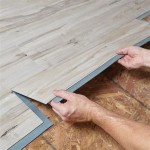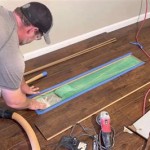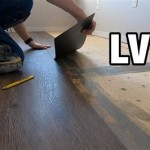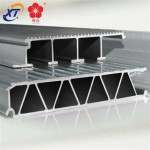What Is The Width Of A Roll Vinyl Flooring Planks?
Roll vinyl flooring, often referred to as sheet vinyl, represents a continuous, flexible flooring material sold in rolls. It stands in contrast to vinyl planks or tiles, which are individual units installed piece by piece. Understanding the width of roll vinyl flooring planks, or rather, the width of the roll itself, is crucial for accurate planning, cost estimation, and efficient installation. It directly influences the number of seams required, the amount of waste generated, and the overall aesthetic outcome of the flooring project. This article will delve into the standard widths available for roll vinyl flooring, factors affecting width selection, optimal installation practices based on width considerations, and the impact of seam placement and visibility.
Standard Widths of Roll Vinyl Flooring
Roll vinyl flooring is manufactured in several standard widths, designed to accommodate a variety of room dimensions and minimize waste. The most commonly encountered widths are 6 feet (72 inches), 12 feet (144 inches), and occasionally, 13.2 feet (158.4 inches). These standard widths aim to cover the majority of residential room sizes with as few seams as possible, thereby improving the visual continuity and water resistance of the floor.
The prevalence of 12-foot wide rolls stems from its suitability for covering typical bedroom and living room sizes, reducing the need for seams in many installations. Six-foot rolls are often used in smaller rooms like bathrooms, hallways, or kitchens where maneuvering a wider roll might be more challenging. The less common 13.2-foot option is available from some manufacturers and can be beneficial for particularly wide rooms, further minimizing seam requirements.
It’s important to note that availability can vary depending on the manufacturer and the specific product line. Not all patterns or styles of roll vinyl flooring are offered in every width. Therefore, verifying width options with the supplier is a critical first step in the flooring selection process. Special orders may be possible for non-standard widths, but these typically involve higher costs and longer lead times.
Beyond the standard widths, slight variations may exist due to manufacturing tolerances. These variations are generally minor and fall within acceptable limits, but it's always advisable to measure the actual width of the roll before cutting to ensure accurate fitting. Overlooking this step can lead to discrepancies and potentially require adjustments during installation.
The selected width must also consider the practical aspects of transportation and handling. Wider rolls are heavier and more cumbersome to move and maneuver, potentially requiring multiple installers. Smaller rolls are easier to handle but may necessitate more seams, impacting both the labor involved and the final appearance of the floor.
Factors Affecting Width Selection
Choosing the appropriate width of roll vinyl flooring involves carefully considering several factors related to the room's dimensions, the desired aesthetic, and the practical limitations of installation. One of the primary considerations is the room's largest dimension. The goal is to select a width that can cover this dimension with minimal seaming.
For instance, if a room's widest point is 11 feet, a 12-foot roll can be used, resulting in a single, seamless installation. Conversely, using a 6-foot roll would necessitate at least two seams, increasing the risk of moisture penetration and potentially detracting from the overall appearance. Minimizing seams is particularly important in areas prone to spills or moisture, such as kitchens and bathrooms.
Beyond room size, pattern matching plays a vital role in width selection. If the roll vinyl flooring has a complex or repeating pattern, using narrower rolls might make it more difficult to align the patterns seamlessly at the seams. Wider rolls, in this case, minimize the number of seams and, consequently, the challenges associated with pattern matching.
Accessibility also impacts width selection. Narrow hallways, tight corners, or staircases can make maneuvering wide rolls challenging or impossible. In such situations, opting for narrower rolls or even considering alternative flooring options like vinyl planks might be more practical. The physical demands of handling heavy, wide rolls should also be taken into account, especially if the installation is being carried out by a single individual.
Budgetary considerations can also influence the choice. While wider rolls might reduce labor costs by minimizing seams, they can also be more expensive per square foot. It’s prudent to compare the overall cost of different width options, factoring in both material costs and installation expenses. Furthermore, potential waste must be considered. If a significant portion of a wider roll is unused, it might be more economical to opt for a narrower roll even if it requires additional seaming.
Finally, the subfloor condition must be evaluated. Uneven subfloors can exacerbate the visibility of seams. While proper subfloor preparation is essential regardless of the roll width, using wider rolls can minimize the length of seams and, consequently, reduce the impact of minor imperfections in the subfloor.
Optimal Installation Practices Based On Width Considerations
The successful installation of roll vinyl flooring hinges on proper preparation, precise cutting, and meticulous seam treatment. The selected roll width directly influences these aspects of the installation process. When using wider rolls, the initial challenge lies in accurately measuring and cutting the material to fit the room's dimensions.
Precise measurements are paramount to avoid over or under-cutting the vinyl. Over-cutting can lead to gaps along the perimeter of the room, while under-cutting necessitates piecing together scraps, resulting in unsightly seams. A sharp utility knife and a straightedge are essential tools for achieving clean, accurate cuts. For large rooms, using a chalk line to mark the cutting line can ensure straight, consistent cuts across the entire width of the roll.
When seams are unavoidable, the placement and treatment of these seams become critical. Ideally, seams should be placed in areas with minimal foot traffic and away from direct sunlight, which can accelerate the degradation of the adhesive. Seams should also be placed perpendicular to the primary light source to minimize their visibility.
Proper seam sealing is crucial for preventing moisture penetration and ensuring the longevity of the flooring. Various seam sealing methods exist, including chemical welding, heat welding, and the use of seam sealers. The choice of method depends on the type of vinyl flooring and the manufacturer's recommendations. Chemical welding involves using a solvent-based adhesive to fuse the edges of the vinyl together, creating a virtually seamless bond. Heat welding is typically used for commercial-grade vinyl flooring and involves melting the edges of the vinyl together using a hot air gun. Seam sealers are liquid adhesives that are applied to the seam to create a waterproof barrier.
Irrespective of the method used, meticulous attention to detail is essential. The seam area must be clean and free of debris before applying the sealant. The sealant must be applied evenly and allowed to cure completely according to the manufacturer's instructions. Excess sealant should be carefully removed to avoid leaving a sticky residue. A seam roller can be used to press the seams firmly together, ensuring a strong, watertight bond.
For narrower rolls that require multiple seams, meticulous pattern matching is essential for a visually appealing result. Before cutting the vinyl, carefully align the patterns to ensure that they flow seamlessly across the seams. This might involve some additional material waste, but the improved aesthetic outcome is often worth the extra cost. Using transparent tape to temporarily hold the patterns in place while cutting can help ensure accurate alignment.
Finally, proper subfloor preparation is critical for a successful installation, regardless of the roll width. The subfloor must be clean, level, and dry. Any imperfections, such as cracks or holes, must be filled and smoothed before installing the vinyl flooring. An uneven subfloor can lead to uneven seams, increased wear and tear on the flooring, and potential moisture problems.
Impact of Seam Placement and Visibility
The placement and visibility of seams significantly influence the overall appearance and performance of roll vinyl flooring. Minimizing the number of seams and strategically positioning them in inconspicuous areas are crucial for achieving a visually appealing and durable floor. As previously mentioned, seams should ideally be located in areas with low foot traffic and away from direct sunlight.
Placing seams under furniture or along walls can help conceal them and protect them from wear and tear. Avoid placing seams in doorways or other high-traffic areas where they are more likely to be damaged. Seams should also be oriented perpendicular to the primary light source to minimize their visibility. When light shines directly on a seam, it can accentuate any imperfections and make the seam more noticeable.
The color and pattern of the vinyl flooring also influence the visibility of seams. Solid-colored vinyl flooring tends to show seams more readily than patterned vinyl flooring. Busy patterns can help camouflage seams and make them less noticeable. When using patterned vinyl flooring, careful pattern matching is essential to ensure that the patterns flow seamlessly across the seams.
Proper seam sealing techniques play a crucial role in minimizing seam visibility. As described earlier, various seam sealing methods are available, each with its own advantages and disadvantages. The choice of method should be based on the type of vinyl flooring and the manufacturer's recommendations. Regardless of the method used, meticulous attention to detail is essential for achieving a tight, watertight seal that minimizes seam visibility.
Regular maintenance can also help prolong the life of seams and minimize their visibility. Clean spills immediately to prevent them from seeping into the seams. Avoid using harsh chemicals or abrasive cleaners that can damage the seam sealant. Regularly inspect the seams for any signs of wear or damage and repair them promptly to prevent further deterioration. Over time, seams can collect dirt and grime, making them more visible. Regular cleaning with a mild detergent and water can help keep seams clean and minimize their visibility.
In conclusion, understanding the interplay between roll vinyl width, installation techniques, and seam management is fundamental for achieving a durable, aesthetically pleasing floor covering. By carefully considering the room's dimensions, pattern requirements, and practicality of installation, the appropriate width can be selected and installed with minimal seams, enhancing both the visual appeal and longevity of the roll vinyl flooring.

D C Fix Outdoor Floor Grey Oak 6 Ft Width X 12 Length 72 Sq Vinyl Roll Flooring Simple To Install Made For Exterior Use

Lifeproof Travertine Plank Stone Residential Light Commercial Vinyl Sheet Flooring 10 Mil 12ft Wide X Cut To Length U6880537c932l14 The Home Depot

Homease Pvc L And Stick Vinyl Flooring Roll 23 X 196 32 Sq Ft Thicken Self Adhesive Wood Planks Waterproof Wear Resistant Easy Diy

Vinyl Flooring Tiles Kosy Furnishing Kota Kinabalu Sabah

Sheet Vinyl Vs Tile Flooring Comparison Guide Floorcon

Forbo Eternal Wood 13942 Classic Timber Sheet Vinyl 79 Width

Armstrong Flexstep Good Armg2704401 Natural Vinyl Sheet 12 Width Warehouse 9 10

Types Of Vinyl Flooring The Home Depot

Flooring Thickness Guide What Is The Best Vinyl Lx Hausys

Shaw Cascades 12 Wide Vinyl Sheet
Related Posts








